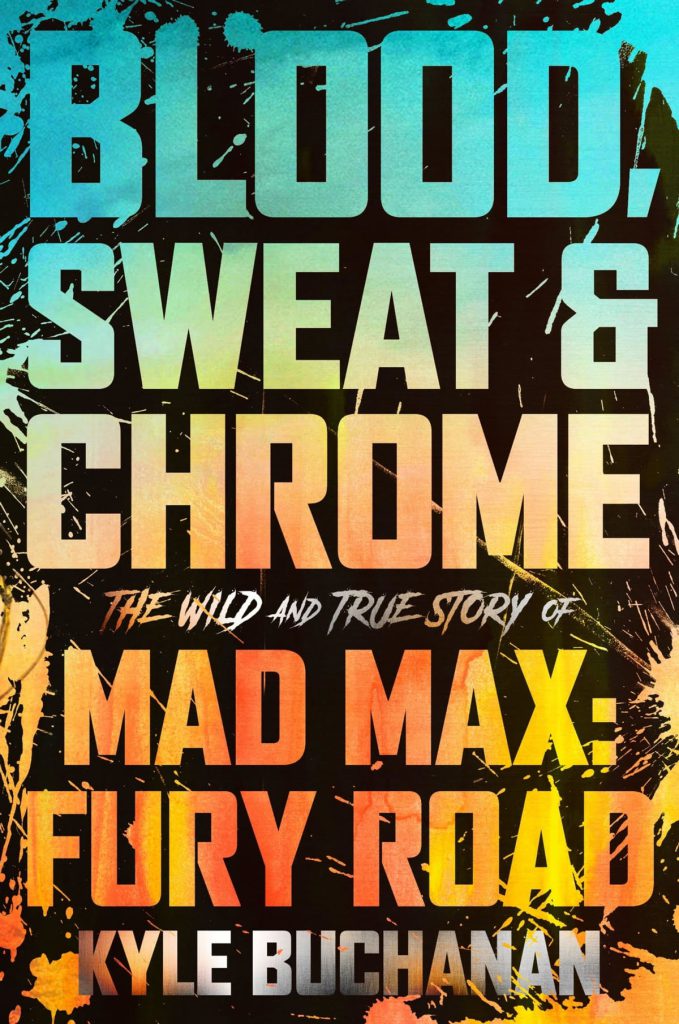Mad Max: Fury Road is a post-apocalyptic dystopian movie with an outwardly simple plot: the protagonists escape captivity and race towards a destination, The Green Place, where they will be safe from their captors who are in murderous hot pursuit. After discovering The Green Place no longer exists, they go back the way they came, taking the fight to their oppressors in order to return to the only viable home they know, in the process transforming from property to heroes who make it rain with redemption. It is the archetypal hero’s journey, but in the hands of director George Miller, it arrives customized with outrageous visionary style and much chrome. This book, Blood, Sweat & Chrome: The Wild and True Story of Mad Max: Fury Road by Kyle Buchanan, is an oral history of the making of the movie. On every page, somebody involved with the film discloses something that reinforces how unlikely it is that it ever got made.
The captivity/desperation/redemption arc in Fury Road could function as a metaphor for its own production. Starting around 1997, multiple studios tried to get it made, each one eventually glad to get it off their hands until the game of heavy metal musical chairs ended within the studios of Warner Brothers. Mel Gibson, Heath Ledger, Michael Fassbender, Johnny Depp, and even Eminem were at various points seriously considered for the role of Max, which eventually went to Tom Hardy. Gal Gadot, Jessica Chastain, and Uma Thurman were slated to play Furiosa, the true main character of the movie, before Charlize Theron won the role.
Immortan Joe, the chief villain, was initially blue. All of the stunts observable in the movie were created with real, ornately customized vehicles and real people. The shoot was moved from Australia to Namibia because a historic amount of rain turned the inert wasteland into fields of wildflowers. The flame-throwing electric guitar wielded by Immortan Joe’s mutant bugler had to be redesigned because director Miller wanted it not only to shoot flames but to actually play notes. It then weighed eighty pounds, which is why the bugler character, The Doof Warrior, dangles throughout the movie from a bungee in front of the wall of speakers fastened to the Doof Wagon…et cetera.
The long gestation of the movie allowed Miller to get every second visualized. This fever dream manifested itself as 3,500 storyboard panels; there was no real script. This was a problem for the actors, who did not necessarily know why they were doing what they were doing at any given time; only George Miller knew. Because they were filming from basically a graphic novel, panel by panel, the takes were often only a few seconds. Once these pieces were edited together, the method resulted in action of a remarkably frenetic pace, perhaps the reason why many cite Fury Road as the greatest action movie of all time. But it could have been the greatest disaster in the history of film.
Buchanan, Kyle. Blood, Sweat & Chrome: The Wild and True Story of Mad Max: Fury Road. New York: William Morrow & Company, 2022.


